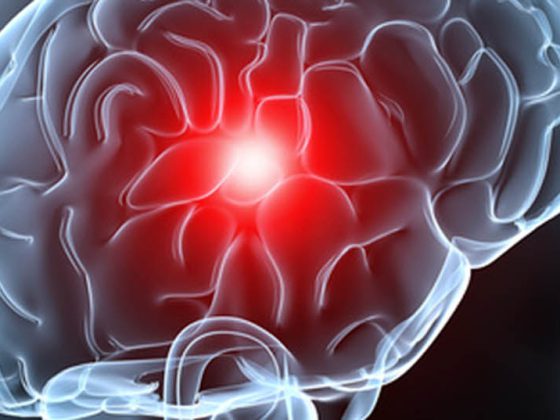Purpose: Does thalamotomy using MR-guided focused ultrasound (MRgFUS) significantly improve tremor in patients with previously refractory essential tremor (ET) compared with sham treatment, and does the side effect profile justify this stereotactic therapeutic approach?
Background: From non-controlled studies, thalamotomy by MRgFUS leads to improvement of tremor in patients suffering from ET. Controlled studies are not yet available for this comparatively new therapeutic procedure.
PATIENTS AND METHODS: This multicenter, double-blind, randomized study included patients with moderate to severe ET who responded to at least two drug treatment trials including. propranolol or primidone had not responded. Patients were randomized in a 3:1 ratio, assigned to stereotactic thalamotomy by MRgFUS or sham intervention, which proceeded in a manner analogous to thalamotomy without delivering acoustic energy to the brain during sonication periods. Only the treatment team knew to which group the patients were assigned; patients and investigators were blinded. The anatomical target was the nucleus ventralis intermedius of the thalamus (Vim), a target also used in deep brain stimulation (DBS) in the treatment of tremor syndromes. Tremor severity was assessed with the Clinical Rating Scale for Tremor (CRST), and quality of life was assessed with the Quality of Life in Essential Tremor (QUEST) questionnaire. The study was performed at baseline and at 1, 3, 6 and 12 months. The tremor examination was videotaped and assessed by an independent group of neurologists who were unaware of the treatment allocation. After 3 months, patients in the sham treatment group had the option to switch to the treatment group.
Results: 76 patients were included in the analysis (56 MRgFUS thalamotomy, 20 sham treatment). The CRST is a point scale ranging from 0-32, with higher scores indicating more clinical involvement. Hand tremor contralateral to the cerebrally treated side improved more markedly in the MRgFUS thalamotomy group (from 18.1 to 9.6 points at 3 months) than in the sham treatment group (from 16.0 to 15.8 points). This improvement in the thalamotomy group remained stable over the 12-month period. In the thalamotomy group, quality of life improved analogously to the clinical tremor reduction compared with the sham-treated group. Side effects were gait disturbances in 36% of cases in the thalamotomy group and paresthesias and numbness in 38% of cases, which persisted for 12 months in 9 and 14% of patients, respectively.
Authors’ conclusions: The results show that the described improvement is due to the treatment and it is not a placebo effect.
Comment: The present study is the long-awaited controlled trial confirming the promising results of smaller uncontrolled case series. Of particular importance is that the use of a sham-treated comparison group demonstrated that this was not a placebo effect. It should be emphasized that these were severely affected patients who could not be adequately treated with the usual conservative therapies available, including primidone and propranolol. The crucial question for affected patients remains whether the disease-related reduction in quality of life justifies the risks of stereotactic therapy. However, this question is analogous to the use of DBS, the efficacy of which has been demonstrated in several controlled studies and is considered the gold standard for surgical treatment of ET. Accordingly, another control group of DBS-treated patients would have been desirable to compare the advantages and disadvantages of the two invasive procedures. According to the study presented here, we know that in the treatment of ET, both therapeutic methods are effective.
InFo NEUROLOGY & PSYCHIATRY 2016; 14(6): 42.











